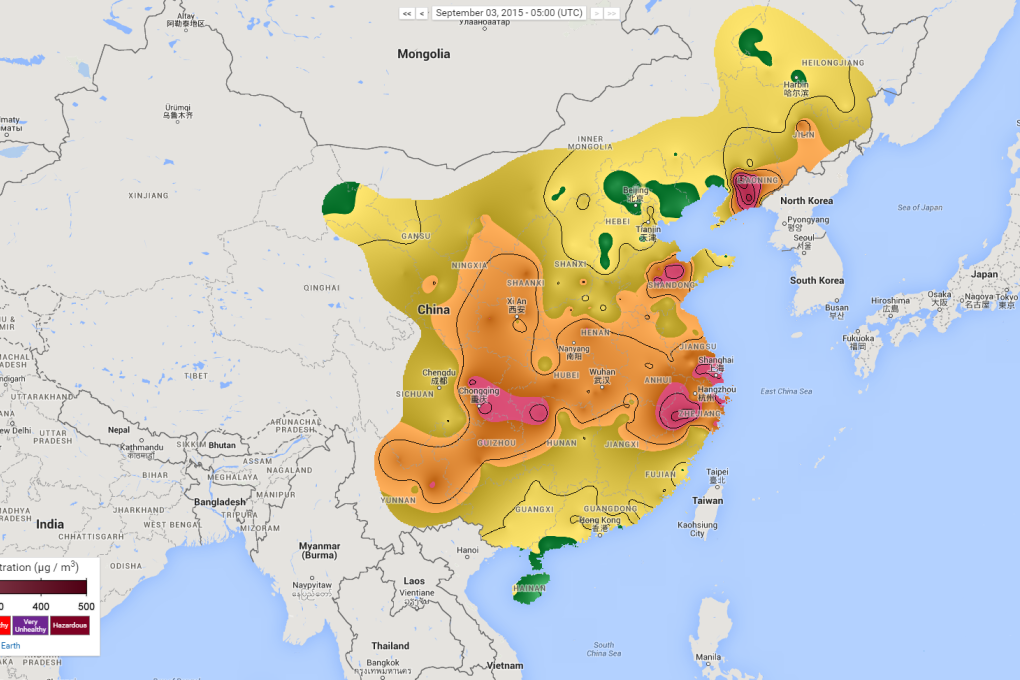Advertisement
China's pollution on Google Maps: Smog data shows 92 per cent breathe in unhealthy air ... but how does Hong Kong fare?
Reading Time:2 minutes
Why you can trust SCMP
0

Google may be blocked for Chinese users, but that hasn’t stopped scientists from using the US internet giant's services to help map China’s pollution problem.
Scientists working at the University of California Berkeley and Nanjing University previously mapped hourly pollution data from over 1,500 sites across China - including Hong Kong - to produce a comprehensive smog map of the country’s heavily populated eastern provinces.
“The greatest pollution occurs in the east [of the country], but significant levels are widespread across northern and central China and are not limited to major cities or geological basins,” Robert Rohde and Richard Muller wrote in their paper, published in the journal Plos One.
During the period covered by the scientists’ paper, from April to August 2014, 92 per cent of the population of China experienced at least 120 hours of unhealthy air (according to US environmental protection agency standards) and 38 per cent experienced unhealthy air on average.
The scientists calculated that the observed air pollution is calculated to contribute “to 1.6 million deaths [per] year in China” or around 17 per cent of all deaths.
Advertisement